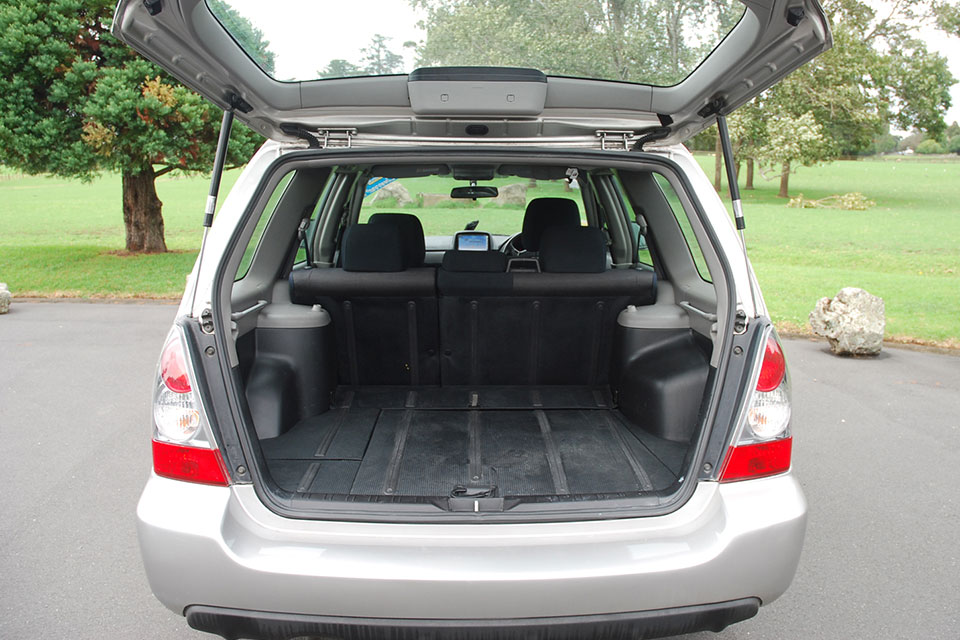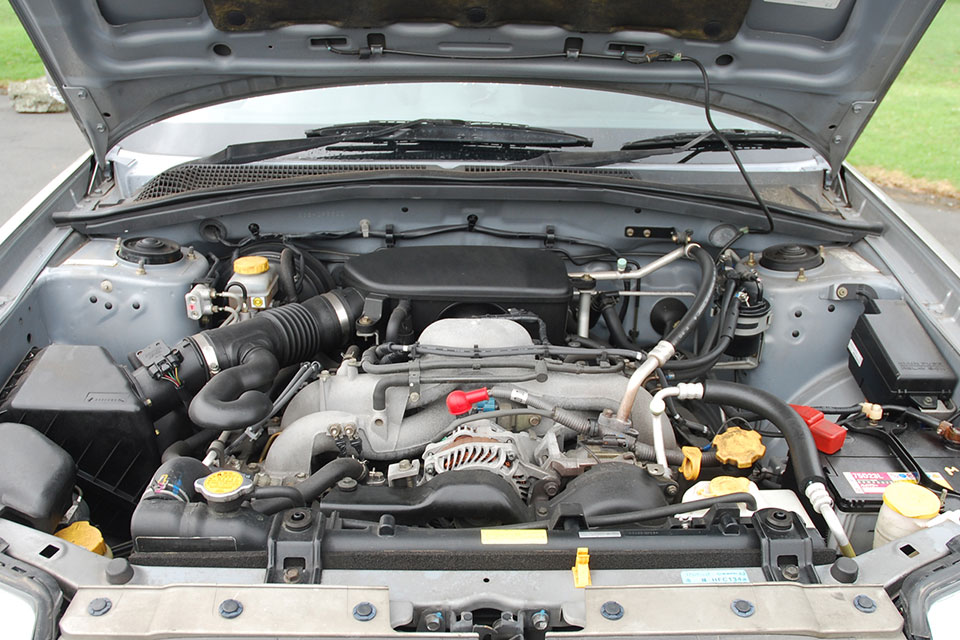Subaru Forester 2002-2008 used car review
The Subaru Forester is rugged and spacious for a small SUV.

The Subaru Forester is rugged and spacious for a small SUV. Its all-wheel drive system makes it surprisingly capable on slippery surfaces.
Based on the Subaru Impreza, the Forester was one of the first of the new wave of modern small SUVs. The second generation is a significant improvement over the first. It is lighter for better fuel economy and performance. Bigger, more powerful engines became available.
Inside and out
Outside, the Forester looks more like a boxy station wagon raised higher on its suspension than other SUVS. It has a conservative look, with rectangular headlights and a rectangular grille. Both the front and rear are square and flat. The wheel arches are big and chunky. Models with a turbocharged engine feature a large hood scoop in the bonnet. Standard roof rails make fitting a rack or storage box easy.
A feature of the Forester is the huge amount of headroom. Big windows also make it light and airy. The interior is similar to the outside, square and slightly bland. That’s particularly evident in the standard light grey colour. A touchscreen infotainment unit sitting on top of the dashboard looks like it is not meant to be there.
In the space where a screen or stereo should fit are two handy storage spaces. Next to this is a pop-out cup holder and, below, chunky dials for the climate control air-conditioning.
The steering wheel is Momo-branded and wrapped in leather which, at 12 years old, is beginning to show wear. The wheel features buttons for controlling the transmission. It can be adjusted for tilt. Metal rings surround the instrument gauges which are large and easy to read.
Although the front seats are comfortable, they are flat and lack support when cornering. Covered in a durable fabric, they are easy to wipe clean. The driver's seat is adjustable for height. In the rear, legroom is excellent. The seat is flat right across, allowing the use of a booster seat in the centre position. It is not wide enough for three adults to be comfortable.
With the seats up, boot space is impressive at 406 litres, enough for four large suitcases. With seats folded down, it expands to 1629 litres. The Forester should be able to carry a couple of mountain bikes. If you are into outdoor activities and take a lot of dirty or wet gear, the Forester features hard-wearing, easy to clean rubber and plastic flooring and seat backs.
On the road
Being set up differently to other SUVs makes a difference in how the Forester drives. It is longer and has a lower roofline than cars like the Toyota RAV4.
The suspension is also quite firm, though not so hard as to be uncomfortable for passengers. That means less body roll and better cornering than other vehicles of this type, which are traditionally quite soft.
Many cars claim to be all-wheel drive but shift power to all four wheels only when the vehicle’s electronic systems calculate it is required. The system fitted to the Forester provides constant power to all wheels all the time, so delivery is smooth with improved grip and handling.
It is also surprisingly capable off the road. A limited-slip differential provides additional traction. Manual models feature a low-range transmission for further off-road ability. The Forester can tackle most surfaces, restricted only by its limited ground clearance and road-orientated tyres. Beaches, muddy paddocks or rutted tracks should pose little problem.
Three engines are available. Most used import Foresters, including our review vehicle, are powered by a 2-litre four-cylinder unit. A 2.5-litre four-cylinder is available in New Zealand-new cars. Turbocharged versions of both engines are available. With 101kW and 186Nm, the 2-litre Forester performs well around town. It does feel a little underpowered on hills.
It is noisy, particularly at the speed limit. Our vehicle features a four-speed automatic with a five-speed manual option. The automatic is smooth but the engine sounds like it is working harder than you would expect. It can be changed manually through the shifter or steering wheel-mounted buttons.
Parking or manoeuvring the Forester in tight spaces is easy. Visibility is excellent, even to the rear, thanks to large windows. Our review vehicle is fitted with a reversing camera. Its 10.8-metre turning circle is average for this type of vehicle.
For a small SUV, the Forester has a healthy tow rating at 730kg (unbraked), enough for a medium-sized trailer; or 1,400kg (braked), or a small boat.
Safety
The Subaru Forester (2002-2009) has a four-star Used Car Safety Rating, based on real-world crash data. Our review car features driver and passenger airbags, electronic brakeforce distribution and electronic stability control. This is optional and can be identified by a ‘VDC off’ button below and to the right of the steering wheel.
The rear seats have ISOFIX child seat mountings, along with tether mounts, for the window seating positions. The centre seat has a full shoulder-style seatbelt, which offers more protection than a lap-only type. In the Forester, this belt comes down from the ceiling and can be retracted entirely away from the seat when not required.
Reliability
The Forester uses a cambelt which will need replacement every 100,000km.
Early 2002-2003 Foresters suffer from head gasket failure. Many of these first cars will have already had the gaskets replaced with better quality versions. Oil in the engine's coolant, a creamy substance under the oil cap and overheating are signs of an issue. A head gasket failure will likely result in the need for a used replacement engine or a major rebuild, costing from $1,500.
Without it, the engines are susceptible to corrosion and other issues.
Oil seepage from around the engine's rocker covers can occur. This will become apparent as you will see oil on the engine and it can smoke when hot. It is a minor yet relatively complicated repair, costing from $500.
Another issue is ‘binding’ in the all-wheel drive system. This will present itself as an unwillingness to make tight turns and noise from under the car when trying to do so.
Idle valve sensors and oxygen sensors are prone to failure. These will both trigger the ‘Check Engine’ light on the dashboard. Replacement for each will cost around $200.
Subarus are popular for visiting ski fields and snowy areas both here and in Japan, where our used import review vehicle came from, so check under the car for signs of corrosion.
Subaru’s corrosion protection is usually excellent but watch for discolouring and bubbling of metal surfaces around the suspension and rear differential. If you see this, avoid the vehicle.
Cost of ownership
The 2-litre engine requires a service every six months or at 10,000km, whichever comes first. A Subaru dealer quoted us $415 for a standard service. The cambelt needs to be replaced every 100,000km at a cost of $1,200 to $1,500.
RightCar estimates that over 14,000km of driving a year, a 2-litre Forester will cost $2,690 to fuel. The 60-litre fuel tank will cost $120 to fill at $2 a litre. You should be able to travel 570km before the fuel light comes on.
A vehicle licence for a 2004 Forester costs $85.59 a year, with the car in the cheapest ACC levy group.
Trade Me Insurance estimates insurance for a Forester valued at $6,060 will cost $46.20* per month. A Honda CR-V costs $1 more.
Buyers’ guide
Trade Me has this generation Forester available from as little as $3,000 up to $14,000. We recommend hunting for a 2004 or later vehicle as the head gaskets were improved, reducing the chance of a major engine failure.
Variants
- X – Standard specification. Features manual air conditioning, leather steering wheel and alloy wheels.
- XS – Adds climate control air conditioning, front fog lights and steering wheel control for the transmission.
- Cross Sports – Adds a body kit, sports front seats, electric control for the driver's seat and sports alloys.
- XT – Adds a 2-litre turbocharged engine.
- STI – Features a 2.5-litre turbocharged engine, Brembo brakes, unique body kit, 18-inch alloy wheels, sports front seats and sports steering wheel. Most commonly painted blue or white with pink STI decals.
In New Zealand, the Forester is available in X, XS and XT versions. They all feature the 2.5-litre engine. The local X and XS are easy to spot as they have black plastic bumpers.
Timeline
- 2002 Launched in Japan
- 2004 STI model added to range
- 2006 Significant facelift
- 2008 Replaced by a new model
Details
2004 Subaru Forester XS
$5,250 to $14,000 for models that have travelled 70,000 to 120,000km
2-litre four-cylinder, 101kW/186Nm (claimed)
Four-speed automatic, all-wheel drive
9.6-litres per 100km (claimed)
Regular
10,000km or Six months
Four-star Used Car Safety Rating
Space saver
4455mm
1735mm
1650mm
730kg (unbraked), 1400kg (braked)
10.9m
This review covers the Subaru Forester for model years 2002, 2003, 2004, 2005, 2006, 2007 and 2008.
Review vehicle supplied by 2CheapCars.
*Our insurance estimates are based on a 35-year-old male with no accidents in the last two years, garaging the car in Mission Bay, Auckland. The car is not used for business and will cover 10,000km to 20,000km a year. We estimate with no option add-ons and $500 excess. Customise your estimate at Trade Me Insurance.
Image gallery
Also consider






